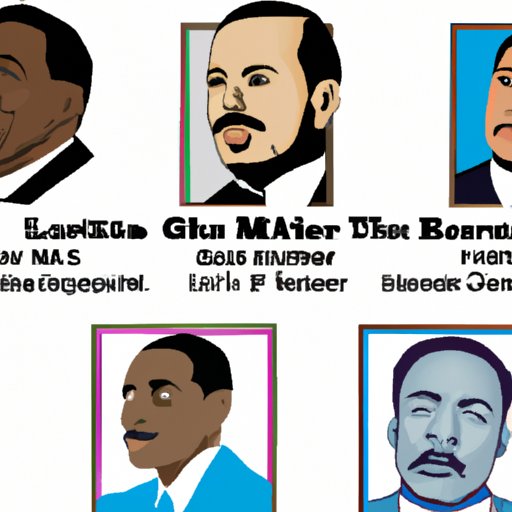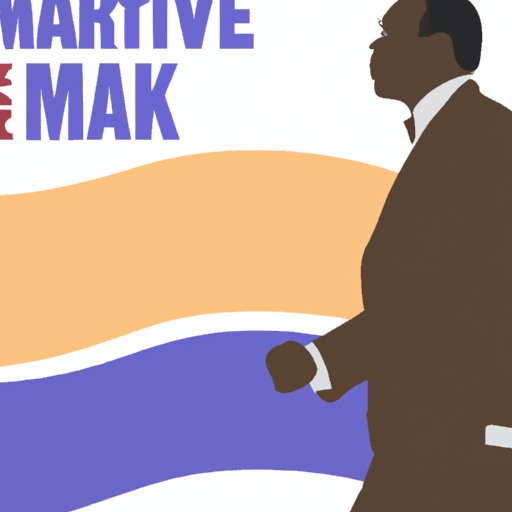Introduction: Overview of Martin Luther King Jr. and His Leadership Style
Martin Luther King Jr. was an influential figure in the civil rights movement of the 1950s and 1960s. He is best remembered for his peaceful protests and inspiring speeches that helped to bring attention to the plight of African Americans and galvanize support for civil rights. As a leader, he embraced non-violence and sought to create a sense of unity among those working towards social and racial justice. His legacy lives on today, and his example remains a powerful reminder of what can be achieved through peaceful protest and strong leadership.
The purpose of this article is to explore how Martin Luther King Jr. was a good leader. We will look at his leadership style and examine how it contributed to the success of the civil rights movement. We will also investigate his beliefs around non-violence, his views on economic inequality, and his role in the March on Washington. Finally, we will compare MLK to other notable leaders to gain further insight into his legacy.
Analyzing MLK’s Leadership Style
MLK was a firm believer in non-violent resistance. He believed that violence was not only ineffective but also morally wrong. He argued that it was possible to achieve change without resorting to violence, and that peaceful protests were more likely to bring about lasting change. He used his platform to call for unity among those working towards civil rights, emphasizing the need for people to come together and work towards a common goal.
MLK put his beliefs into practice with his leadership of the Montgomery Bus Boycott. In 1955, Rosa Parks refused to give up her seat on a bus in Alabama, leading to a boycott of the city’s buses by the African American community. MLK was chosen to lead the boycott and he used his charisma and oratory skills to rally people behind the cause. He spoke out against the injustice of segregation and called for a unified response from the African American community.
MLK also played a key role in organizing the 1963 March on Washington. He worked closely with other civil rights leaders to plan the event and ensure that it went off without a hitch. On the day of the march, he delivered his famous “I Have a Dream” speech, which has since become one of the most iconic moments in the civil rights movement.
Examining MLK’s Impact on Civil Rights Movements
The Montgomery Bus Boycott was a major victory for civil rights activists and a testament to MLK’s leadership. The boycott lasted for over a year and resulted in the desegregation of the city’s buses. It was a significant step forward for the civil rights movement and showed the power of peaceful protest.
The March on Washington was another major event organized by MLK and other civil rights leaders. Over 250,000 people gathered in Washington DC to demand equal rights for African Americans. MLK gave his famous “I Have a Dream” speech, which has since become one of the most iconic moments in the civil rights movement.
In addition to the Montgomery Bus Boycott and the March on Washington, MLK was involved in a number of other key events in the civil rights movement. He organized sit-ins at lunch counters, freedom rides, and voter registration drives. He also took part in the Selma to Montgomery marches, which were aimed at drawing attention to the lack of voting rights for African Americans in the South.
Exploring MLK’s Legacy of Non-Violence
MLK was a firm believer in non-violent resistance. He believed that violence was not only ineffective but also morally wrong. He argued that it was possible to achieve change without resorting to violence, and that peaceful protests were more likely to bring about lasting change. He practiced what he preached, leading peaceful protests and never engaging in physical altercations.
MLK encouraged others to follow his example, believing that non-violent resistance was the best way to achieve change. He argued that if people remained peaceful in the face of oppression, they would eventually win. This belief was tested in the Birmingham campaign of 1963, when thousands of protesters marched peacefully despite facing violent opposition from police officers.
Investigating MLK’s Vision for Social Justice
MLK had a vision for social justice that extended beyond civil rights. He was a vocal advocate for economic equality and spoke out against poverty and unemployment. He was a firm believer in the power of education and saw it as a way to empower the disadvantaged. He also spoke out against discrimination based on gender, religion, and sexual orientation.
Perhaps MLK’s most famous speech was his “I Have a Dream” address, which he gave at the March on Washington in 1963. In the speech, he called for an end to racial segregation and outlined his vision for a future where all people are treated equally. He ended the speech with the now-iconic phrase, “Free at last, free at last. Thank God Almighty, we are free at last!”

Comparing MLK to Other Notable Leaders
When looking at MLK’s legacy as a leader, it is useful to compare him to other notable figures. One of the most obvious comparisons is to Nelson Mandela, who led the struggle for freedom in South Africa. Like MLK, Mandela was an advocate for non-violent resistance and sought to unify people behind a common goal. Both men also faced long periods of imprisonment for their beliefs.
Another comparison can be drawn between MLK and Mahatma Gandhi. Like MLK, Gandhi was a proponent of non-violent resistance and used peaceful protests to push for change. He also advocated for the rights of the poor and marginalized, echoing MLK’s own views on social justice. Finally, both men were willing to make great personal sacrifices in pursuit of their goals.
A final comparison can be drawn between MLK and Cesar Chavez. Chavez was a civil rights leader who fought for the rights of farm workers in California. Like MLK, he was an advocate for non-violent resistance and used peaceful protests to draw attention to the plight of the working class. He also sought to create unity among those fighting for social justice, echoing MLK’s own beliefs.
Conclusion: Summary of MLK’s Legacy as a Leader
Martin Luther King Jr. was an influential leader in the civil rights movement. He embraced non-violence and sought to create a sense of unity among those working towards social and racial justice. Through his leadership of the Montgomery Bus Boycott and his involvement in the March on Washington, he helped to bring attention to the plight of African Americans and galvanize support for civil rights. He also spoke out against economic inequality and pushed for equal rights for all people.
When compared to other notable leaders, MLK stands out for his commitment to non-violence and his belief in the power of peaceful protest. He was a powerful orator and a charismatic leader who inspired many with his words and deeds. His legacy as a leader is still felt today, and he can serve as an inspiration to those working towards social justice.
(Note: Is this article not meeting your expectations? Do you have knowledge or insights to share? Unlock new opportunities and expand your reach by joining our authors team. Click Registration to join us and share your expertise with our readers.)
